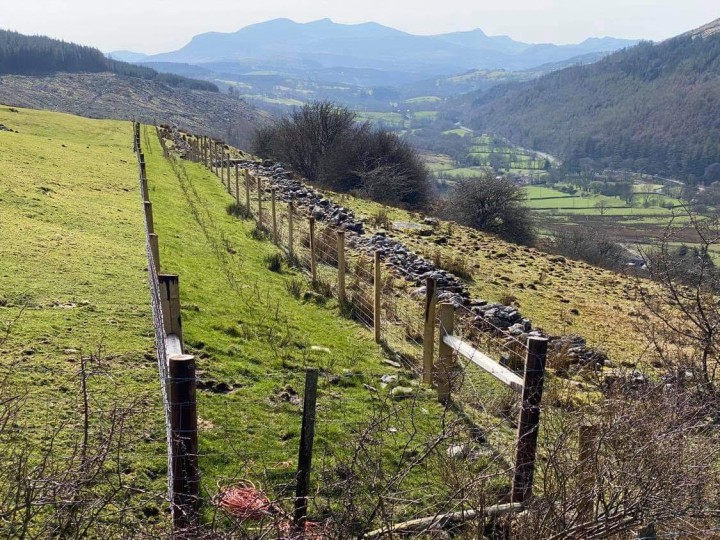Due to restricted and time-limited funding, some of us have had to curb our ambitions! As a group, there are lots of things we can do on our farms that fall under the remit of the project, however, we can’t do everything at once.
Finding the time to undertake the work can be a challenge as well. For example, it takes a lot of time and effort to establish hedgerows…it entails buying the material, preparing the site, and erecting double fences to prevent livestock from eating the plants. And let’s not forget the planting work itself. We plant at a rate of seven saplings per metre – one of the farms created around 1000m of hedgerows last winter – so that’s a lot of planting!
One of the biggest downfalls of the project is that whilst it generously covers the costs associated with undertaking capital works, there is no habitat creation/ management payment, and as such, the farmer isn’t rewarded fully for the time and effort that goes into planning and implementing the work. Some of the farms are fortunate enough to have sufficient hands on deck to be able to undertake the work in-house, whilst others have had to employ contractors to complete the work. For the latter, this means that there is very little or no profit for the farmer. This is by no means a criticism of the partner organisations – we count ourselves fortunate to be able to partake in such a scheme – however future Government schemes must account for this and ensure that farmers are rewarded appropriately for their environmental management work.
What top tips would you recommend to another farm wanting to restore the natural environment?
Ask for advice – there’s no shame in doing so. There are numerous farm advisory groups and conservation organisations out there that would be more than happy to support nature-friendly farming initiatives
Look for funding – there are various grants and support payments available for nature-friendly farming activities, but they’re not always well-signposted
The actions that we’ve undertaken for nature don’t hinder the farming enterprise – in fact, they benefit the business, livestock and the farm’s natural assets – which are of course very building blocks of food production. It’s easy to fall into the mindset that nature and food production are mutually exclusive, whereas, in fact, they go hand in hand
What would you recommend to someone who wants to work collaboratively with other farmers in a joined-up approach?
Go for it! There’s nothing to lose in coming together as a group of farmers to share ideas, knowledge and aspirations. Even better if there’s a cup of tea and cake involved…
We’d recommend a facilitator to coordinate projects. The Snowdonia National Park Authority have been excellent by providing suggestions and advice on what we can do, and then arranging farm visits to ground truth some for these ideas – it’s been invaluable
The Welsh government-funded Farming Connect programme offers funding to help set up farmer working groups, so there is support out there. We would call on Governments across the UK to offer such support as part of future schemes
What support do you need from the government to continue farming collaboratively in a nature-friendly way?
One of the things that the Welsh Government can do to facilitate collaboration would be to include a bonus payment for farmers working together to tackle issues over the wider landscape. Wildlife, climate change, flooding and water quality issues don’t stop and start at farm boundaries – they’re issues that need tackling at a landscape scale. Funding for facilitation support would also be beneficial in future Government schemes.
Alternatively, the Welsh Government could allocate money to organisations like Local Authorities, National Parks or AONBs to act as scheme administrators. More often than not these organisations have trusted, local staff who have experience of working with farmers over larger areas. Based on our experience to date, it’s an approach that we would certainly advocate.
How do you think the government should support farmers in climate mitigation and biodiversity recovery?
The Government must make it easy for farmers to do the right thing. Past agri-environment schemes have been overly prescriptive, with very little room for flexibility and adaptive management. Trust in farmers is key. For some farmers, climate change mitigation and wildlife management will be an unfamiliar concept – therefore the provision of advice and guidance along the way will be vital as well.
Most importantly farmers must be rewarded appropriately for the delivery of environmental benefits.






